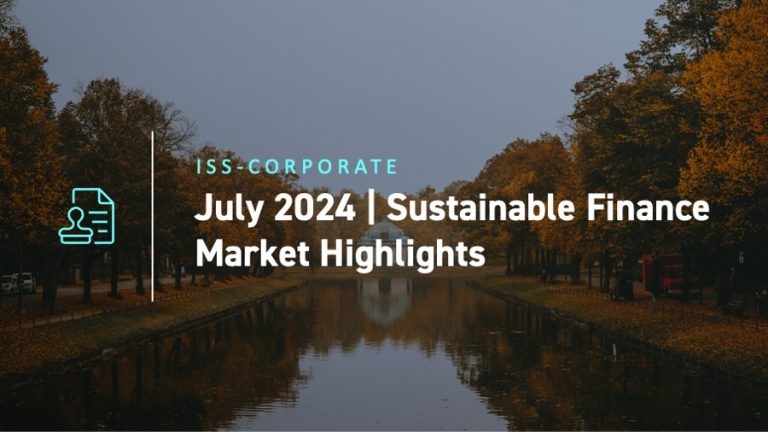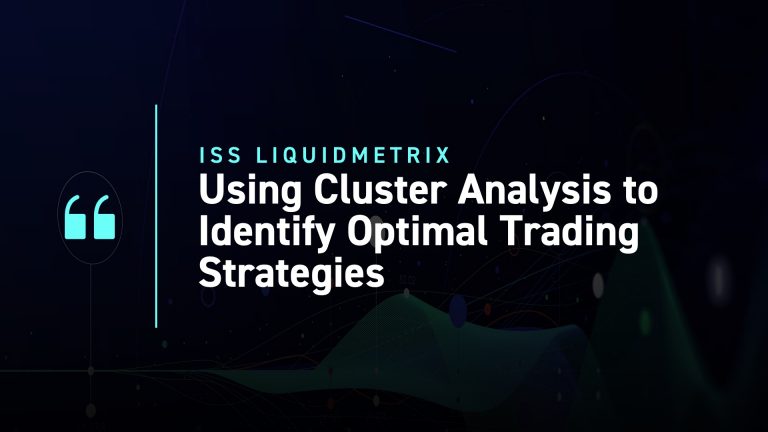Introduction
With the recent COP29 conference developing standards for carbon credit markets, ESG investors may wish to learn more about such credits and the debates surrounding them. A carbon credit is an emissions unit that is issued by a carbon crediting program and represents an emission reduction or removal of greenhouse gases (GHG). Carbon credits are uniquely serialized, issued, tracked, and cancelled by means of an electronic registry. They can be exchanged either in compliance carbon markets, which are regulated and involve emissions reductions that are mandated by law, such as under the EU Emissions Trading Scheme or in Voluntary Carbon Markets (VCMs).
Companies can buy carbon credits to “offset” or “compensate” their unabated GHG emissions within their value chain. Countries are also able, under Article 6 of the Paris Agreement, to transfer carbon credits earned from the reduction or removal of GHG emissions to help one or more other countries meet their emission reduction targets as set out in their Nationally Determined Contributions (NDCs).
Carbon markets have also been promoted as a valuable source of climate finance for developing nations. Some argue such markets can mobilize resources more effectively and at a lower cost than traditional loans from development financial institutions.
However, in recent years, carbon credits have also been criticized for alleged “significant uncertainties in [their] real impact” and for allowing companies to make “questionable claims of carbon neutrality” that rely on offsets rather than encouraging them to invest in long-term solutions to climate change.
A crucial point in carbon credit controversies is that a company can rely on such credits to achieve carbon neutrality without necessarily reducing emissions. If a company reaches a state in which the amount of GHG emissions produced is balanced with the amount that can be removed from the atmosphere, it has achieved “Net Zero.” Achieving Net Zero can involve conventional mitigation techniques, such as the use of clean energy, to reduce the amount of GHGs released into the atmosphere.
Some argue that reaching Net Zero may also involve nature- and technology-based Carbon Dioxide Removal (CDR) solutions to remove the remaining unabated GHG emissions from sources for which mitigation is not feasible—such emissions are also referred to as residual emissions. Guidance on residual emissions varies across different Net Zero standards and industries but companies are usually required to achieve at least a 90% reduction in Scope 1, 2, and 3 emissions by 2050.
Although the term “GHG/carbon neutrality” can be used interchangeably with “Net Zero,” it has different significance in a corporate context. In contrast to Net Zero, carbon neutrality can be claimed without reaching a specific level of emission reduction. Companies can purchase carbon credits to offset unabated emissions and thereby identify as carbon neutral.
The following sections address this controversy more closely by examining how Net Zero frameworks and reporting standards treat carbon credits, common criticisms made of such credits, and the implication of credits for developing countries.
Offsets and Corporate Net Zero Targets
What Do the Net Zero Frameworks and Reporting Standards Say about Offsets?
The importance of applying high standards to carbon credits was emphasized by the United Nations’ High-Level Expert Group (UN HLEG) on the Net Zero Emissions Commitments of Non-State Entities in its report “Integrity Matters,” launched at COP27 in November 2022.
The UN HLEG defines high-integrity carbon credits as credits “associated with a credibly governed standard-setting body that has the highest environmental integrity with attention to positive social and economic outcomes where the projects or jurisdictional programmes are located.” Such credits must also meet, at a minimum, the standards of additionality (that is, the mitigation activity would not have happened without the incentive created by the carbon credit revenues) and permanence (that is, the offset projects can keep carbon locked up for a very long time).
The report states that carbon credits should not be counted toward a non-state actor’s (industry, financial institutions, cities, and regions) interim emissions reduction targets required by the actor’s Net Zero pathway, as these must prioritize deep reductions of emissions across their value chain. (In this respect, the HLEG report is consistent with the Net-Zero Asset Owner Alliance’s recommendations regarding the complementary use and the quality of carbon credits.) However, the HLEG report encourages non-state actors to use high-integrity carbon credits to balance out the rest of their annual unabated emissions because of the credits’ role in facilitating “much-needed financial support towards decarbonizing developing country economies” (a point discussed further in the second section of this paper).
The Science Based Targets initiative (SBTi) initially took a similar stance and had been clear that compensation (actions that companies take to help society avoid or reduce emissions outside of their value chain) and neutralization (actions that companies take to remove carbon from the atmosphere within or beyond the value chain) measures “may supplement, but not substitute, reducing value chain emissions in line with science.” SBTi further stated that carbon credits should not play a major role in Net Zero plans—they should be strictly excluded from short- and middle-term targets and can be included only in long-term Net Zero targets to offset up to 10% of residual emissions. This is to ensure emissions reductions are prioritised and not transferred.
However, earlier this year, the SBTi released a statement suggesting that it has decided to allow the use of carbon credits toward companies’ Scope 3 emissions reduction targets (although not Scope 1 and 2 emissions). While seemingly a minor concession, this statement was met with criticism regarding the reduced incentives for companies to align their business models with the 1.5°C temperature increase limit of the Paris Agreement.
Reporting standards such as the International Financial Reporting Standards’ (IFRS) Sustainability Disclosure Standards, specifically IFRS S2, and the European Sustainability Reporting Standards (ESRS) also require entities to report on their use of carbon credits.
IFRS S2 requires (paragraphs B70 and B71) an entity to describe its planned use of carbon credits to offset emissions to achieve any net GHG emissions targets it has set or that it is required to meet by law. Information about the planned use of carbon credits should demonstrate how and the extent to which these credits are relied upon to achieve the net GHG emissions reduction. While an entity is required only to disclose information about its planned use of carbon credits, it may also include information about credits it has already purchased, which it will use to meet its emissions reductions target.
ESRS requirements (Disclosure Requirement E1-7) specify that carbon removals in a company’s own operations or value chain can be used to neutralize residual emissions (i.e., up to 10% of emissions) to achieve a Net Zero target. Carbon credits, defined as GHG emission reductions or removals from climate change mitigation projects outside a company’s value chain, can potentially support claims of GHG neutrality but not the Net Zero target.
Limitations to the Use of Carbon Credits for Corporate Offsetting Claims
Carbon credits have been subject to a variety of criticisms. Some common criticisms are summarized below.
Offsetting Claims Risk Distracting from the Need for Immediate Emission Reductions
The UN HLEG emphasizes the need for non-state actors to prioritize the urgent and deep reduction of emissions across their value chain. The use of carbon credits risks distracting from this need, however, especially when emissions reduction targets heavily rely on the use of credits. Offsetting cannot be considered a substitute for direct emissions reductions.
Accounting Mechanism to Avoid Double Counting yet to Be Established
None of the international offsetting standard setters currently provide an accounting mechanism to avoid double counting of emissions reductions. Double counting can occur when a company reduces the GHG emissions for which it is responsible and then counts that reduction as an offset for other GHG emissions. Double counting can also occur when two different entities (the project developer and company buying the credit, for example) both claim the same emissions reduction.
A calculation adjustment to avoid double counting is necessary to provide a complete view on the use of carbon credits and is called a “corresponding adjustment.” Corresponding adjustments help ensure that the same emissions reduction cannot be used towards multiple purposes.
Unclear and Inconsistent Terminology Used by Companies
Due to controversies surrounding the use of offsets and their real impact, companies have started using terms such as “neutralization,” “netting-out,” and “compensation.” The term “insetting,” meaning the claim to have offset emissions through reductions or removals within a company’s own value chain, is also gaining traction. However, the consensus across Net Zero standards is that “neutralization” should apply only to residual emissions and that activities that directly reduce GHG emissions in the value chain should not be used as offsets of other residual unabated emissions.
Can Carbon Credits Be a Reliable Source of Climate Financing for Developing and Vulnerable Countries?
Beyond the role carbon credits could or should play in achieving Net Zero targets, they have also been promoted as a means for developing and climate-vulnerable countries to attract private capital and bridge their financing gaps. Indeed, developing and climate-vulnerable countries need greater financial support to implement and step up their mitigation and adaptation measures and VCMs may be able to help channel this support.
While access to affordable finance for developing countries has been at the centre of this year’s COP29 discussions, with the current US$100 billion-a-year commitment set to be replaced by the New Collective Quantified Goal on climate change (NCQG), there is a general consensus among researchers that public finance and multilateral commitments alone are not enough to close the climate funding gap. This situation is illustrated by the fact that developed countries’ pledge, set at Copenhagen’s COP15 in 2009, to mobilize US$100 billion per year by 2020 in a climate finance fund was met two years after its deadline.
In this context, the ability of VCMs to mobilize large-scale private funding (the total reported transaction value of the VCM amounted to US$1.9 billion in 2022 and US$723 million in 2023) should be seen as a complementary financing instrument in the climate finance toolbox.
As Edit Kiss, co-founder and managing partner of Capital Continuum Advisers, explains, carbon markets can “help direct private finance from both investors (those who finance projects for a return) and buyers (those who purchase carbon credits) to those implementing natural climate solutions on the ground [because they] provide revenue certainty to the projects, but it also takes away the price risk for potential long-term investors.”
A criticism of this approach, made by the CCRM, is that potential revenues from carbon credits may also encourage countries seeking to maximize foreign investment to “limit their own national GHG reduction targets so that more of their mitigation potential can be tapped by international offsetting mechanisms.”
Regulators, project developers, credit-buying companies, and investors could contribute to overcoming such a counterproductive incentive for host countries to downscale their own climate ambition, though. For example, regulators, standard-setters, and verification bodies could guarantee the transparency, integrity, and quality of the carbon credits traded on the VCMs. As previously mentioned, the additionality of mitigation projects is a key UN HLEG criterion for determining the quality of the carbon credits and as such could be audited by independent verification bodies.
However, the presence of numerous carbon credits standards and recent controversies concerning validation and verification bodies call into question public confidence in the market. In response, regulators could harmonize and promote market integrity guidelines.
Article 6.4 of the Paris Agreement aims to do this by establishing a new mechanism for the validation, verification, and issuance of high-quality carbon credits. Article 6.2 allows countries to bilaterally exchange mitigation outcomes, such as carbon credits and renewable power, and to report their trade and use them towards their NDCs. While countries failed to reach an agreement on the adoption of Articles 6.2 and 6.4 at COP28, the operationalisation of Article 6.4 was approved on the opening of this year’s COP29. The countries still need to agree on the implementation details of Article 6.2.
Another possible way to reduce the risk of poor-quality carbon projects would be for companies to switch to a “contribution” approach. The CCRM defines climate contributions as “the financial support provided by a company to support climate change action beyond the company’s own value chain, without claiming to neutralise its own emissions.”
The important distinction is that, unlike the logic of offsetting, emissions reductions in a contribution perspective remain attributed to the actors supported. In other words, carbon credits could be purchased by an entity wanting to contribute to climate action but without that entity claiming it has “offset” its own emissions. This paradigm shift could have two major benefits:
- Countries could claim the emission reductions achieved through the VCMs without any double counting problem. Developing countries may thus raise their NDC ambitions by generating carbon credits for “high-hanging-fruits mitigation projects” (i.e., reductions that are either too costly to achieve or that rely on technology inaccessible to the host country).
- As Carbon Market Watch points out in a 2020 paper, “if the objective is no longer to be able to claim carbon neutrality, but rather to provide a financial contribution to a host country’s effort, the objective of seeking the cheapest reductions loses its appeal.” As a result, projects offering sustainable benefits beyond carbon reduction may gain in attractiveness, which may favor poorer countries that tend to have low emissions and “little scope for large mitigation projects.”
Companies could also benefit from adopting a contribution-based approach, as this may signal strong climate leadership that could positively impact some ESG scores. Companies that disclose information and their approach on climate contributions would, for example, score higher under the CCRM assessments. This approach would also increase the credibility of their emissions reductions claims by bringing transparency and certainty that carbon credits are accounted for separately.
Further, project developers could promote their projects’ sustainability and large-scale impact over the long term by, for example, reinvesting carbon credits revenue in the development of more innovative climate solutions or in adaptation projects that would benefit local communities. By focusing on long-term and innovative solutions to tackle climate change, project developers could encourage high-quality carbon credits to be fed into the VCMs and discourage companies or countries from substituting carbon credit purchases for reductions in their own GHG emissions.
Finally, investors looking to finance carbon crediting projects may wish to consider not only whether these projects will generate meaningful additional emission reductions but also these projects’ broader environmental impact (for example, on biodiversity conservation) and social aspects. Carbon credits that are delivering “beyond carbon” environmental and social co-benefits are perceived as coming from higher-quality projects, as shown by the fact that they are traded at a premium (37% in 2023) to carbon credits with no certified co-benefits.
Marissa Lee, an associate director at Global Counsel, says that carbon credits projects from developing countries are more likely to offer a huge range of co-benefits beyond carbon emission reductions, due to their disproportionate vulnerability to climate risks, leading her to conclude that “there is a lot more to be gained by bringing more carbon finance to the Global South.”
Conclusion
Carbon credits have attracted both interest and criticism. Current reporting standards discourage substituting carbon credits for decarbonization measures to reduce corporate or national emissions but do allow for a role for credits to contribute to meaningful climate action. If relevant stakeholders can enhance the transparency, integrity, and quality of the carbon credits traded on the VCMs, the VCMs could encourage financial support for high-impact climate projects, particularly in developing and climate vulnerable countries. ESG investors may wish to take these and other associated risks and opportunities into account as they consider companies and countries that use carbon credits.
Explore ISS ESG solutions mentioned in this report:
- Identify ESG risks and seize investment opportunities with the ISS ESG Corporate Rating.
- Use ISS ESG Climate Solutions to help you gain a better understanding of your exposure to climate-related risks and use the insights to safeguard your investment portfolios.
By:
Ritika Iyer, Associate, Climate Solutions, Net Zero Associate
Livia Wack, Senior Associate and Interim Lead, Climate Solutions, Net Zero
Patricia Perez Arias, Associate Director, Climate Solutions, Transition Risks and Opportunities Head




